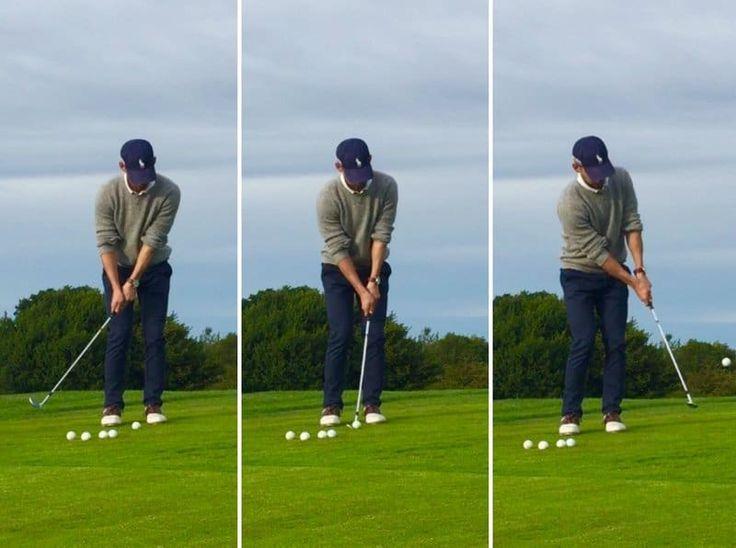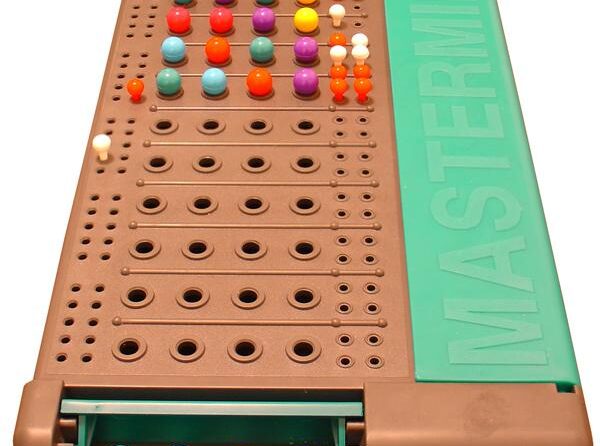Mastering Chipping Techniques for Different Grass Types
Are you a golfer looking to enhance your chipping skills across various grass conditions? Whether you’re just starting out or have years of experience, these strategies will help elevate your short game.
Chipping from a Lush Fairway: Key Techniques for Success
Chipping from a well-maintained fairway can be tricky, requiring specific adjustments in technique. Here are essential tips for achieving optimal ball contact:
Choosing the Right Club and Trajectory:
Select a wedge with moderate loft (around 54-58 degrees) to create a low trajectory that rolls towards the hole. Aim to keep the ball below the level of the pin for better control.
Swing Mechanics and Wrist Position:
Aim for a slightly descending swing path while keeping your wrist neutral. This technique helps produce controlled spin, enhancing accuracy and reducing mishits.
Stance and Grip Considerations:
Your feet should be positioned slightly wider than shoulder-width apart, with weight evenly distributed. A neutral grip with hands low on the club promotes stability during your swing.
Reading the Green:
A keen understanding of green contours is vital. Assess slopes and undulations to adjust your aim accordingly, ensuring you account for potential deflections upon landing.
Adjusting Your Chipping Technique Based on Green Speed
The speed of greens can significantly impact how far chip shots travel. Stimpmeter readings vary widely between courses and even daily conditions, affecting shot outcomes.
The Impact of Green Speed on Your Shots:
- Faster Greens: The ball rolls further due to reduced resistance; thus, less force is needed when striking.
- Slower Greens: More force is required as these greens provide greater resistance against rolling balls.
Tweaking Your Technique by Grass Speed:
- For Faster Greens: Use clubs with less loft (like pitching wedges), take shorter backswings, and strike downwards more firmly.
- For Slower Greens: Opt for clubs with more loft (such as sand wedges), utilize longer backswings, and hit upwards gently to achieve lift.
Effective Strategies for Chipping from Firm vs. Soft Rough
Navigating chipping from rough terrain can be challenging but manageable with proper techniques tailored to firm or soft conditions.
Tactics for Firm Rough Conditions:
- Select lower-lofted clubs like 7-iron or 8-iron to maintain control over distance.
- A steeper backswing will help generate necessary clubhead speed through dense grass.
Tactics for Soft Rough Conditions:
- Choose higher-lofted clubs such as sand wedges or lob wedges.< / li >
- Utilize shorter backswings at slower tempos; this prevents digging into softer grass.< / li >
- Prioritize hitting the ball first before sweeping it out gently using an angled attack.< / li >
- Consider opening up clubface angles or adjusting ball position in stance if additional lift is needed.< / li >
Practice Drills: Boosting Accuracy Across Diverse Grass Types
- < b >Realistic Practice Environments:< / b > Spend time at driving ranges practicing chips under varying conditions; this builds adaptability in controlling distance & spin .< / li >
- < b >Start With The Rough:< / b > Focus initially on solid contact while practicing chips from rough areas—this skill proves invaluable during actual play .< / li >
- < b >Transition To The Fringe:< / b > Move onto fringe areas where chipping becomes easier yet still requires precision—aim here should focus primarily getting up & down quickly .< / li >
- < b >Conclude On The Greens:< / b > Finally practice within putting greens themselves—smooth swings are crucial here! Developing consistency across all terrains enhances overall performance significantly!< br/>< br/>
Mastery over diverse grass types when chipping remains essential towards becoming proficient golfer! Remember , consistent practice coupled alongside professional guidance if necessary will undoubtedly elevate both short game prowess & overall golfing capabilities!
Master the Art of Chipping: Conquer Any Grass Type with This Simple Technique!
Meta Title
Master the Art of Chipping: Conquer Any Grass Type
Meta Description
Unlock your chipping potential with techniques for tackling different grass types. Elevate your short game and improve your golf skills today!
Introduction to Chipping Technique
Chipping is a crucial aspect of golf, often determining the outcome of a score. Mastering chipping not only involves understanding swing mechanics but also adapting to various grass types on the course. This guide will delve into effective chipping techniques tailored for different grass conditions.
Understanding Grass Types
Navigating different grass types is essential for effective chipping. Here’s a brief overview of the common grass types found on golf courses:
| Grass Type | Characteristics | Chipping Technique |
|———————|————————————-|——————————–|
| Bermuda Grass | Short, dense, and fast-growing | Use a more compact swing |
| Bentgrass | Fine and smooth with a soft feel | Softer touch, open face |
| Ryegrass | Thicker and more forgiving | Slightly aggressive swing |
| Poa Annua | Irregular and can be fluffy | Adjust stance for control |
The Importance of Club Selection
Choosing the right club for chipping can significantly affect your performance. Here are some common club options and their uses:
1. Pitching Wedge:
– Ideal for shorter distances and higher loft.
– Great for soft landing on greens.
2. 9-Iron:
- Offers a balance between height and distance.
– Perfect for firm greens where roll-out is needed.
3. 7-Iron:
– Provides more distance while maintaining control.
– Useful when needing to chip from the rough.
4. Chipping Wedge:
- Specifically designed for chipping close to the green.
– Great for making accurate, short shots.
Key Considerations:
- Match your club selection to the grass type.
- Factor in the distance to the hole and any slopes.
Chipping Techniques for Various Grass Conditions
1. Bermuda Grass
- Stance: Square your stance with weight evenly distributed.
- Grip: Maintain a neutral grip for better control.
- Motion: Use a compact swing—short backswing and follow-through.
2. Bentgrass
- Stance: Open stance for better angle and control.
- Grip: Lighter grip pressure helps with feel.
- Motion: Soft, delicate touch with slightly increased follow-through.
3. Ryegrass
- Stance: Slightly wider for stability.
- Grip: Standard grip pressure helps maintain club control.
- Motion: More aggressive swing to counteract thicker blades.
4. Poa Annua
- Stance: Balanced and relaxed.
- Grip: Firm but not tense for better accuracy.
- Motion: Controlled motion—focus on maintaining a consistent rhythm.
Essential Techniques and Tips
Wrist Action
- Keep wrists firm but flexible. Too much wrist movement can lead to inconsistent shots.
Ball Position
- Place the ball slightly back from center for a cleaner strike on most grass types.
Follow Through
- Ensure your follow-through is smooth and finishes high, indicating a well-executed shot.
Practice Drills
- Set up a chipping area with different grass types.
- Use targets to improve accuracy and distance control.
The Role of Green Reading in Chipping
Understanding the green is paramount for chipping success. Here are some techniques:
Assessing Slope and Undulation
- Visualize the path the ball will take. Pay attention to changes in slope and grass texture.
Practice Reading Greens
- Spend time on the practice green, observing how different speeds and slopes affect your chip shots.
Case Studies: Pro Techniques
Case Study 1: The Masters Champion
A professional golfer demonstrated effective chipping on tricky Bermuda grass at Augusta National. By employing a compact swing and crisp contact, they managed to consistently land the ball close to the pin, showcasing finesse in grass selection and execution.
Case Study 2: Ryder Cup Highlights
During the Ryder Cup, multiple players faced challenging Poa Annua grass. Their successful chips involved precise green-reading skills, focusing on short runs and utilize lofted clubs effectively to navigate the unpredictable texture.
Personal Experience: Finding Success with Chipping
Having struggled with chipping on different grass types, I implemented some of the techniques explored in this article. By focusing on specific stance adjustments and green-reading skills, I significantly improved my short game. Regular practice helped me adapt my swing to various grass conditions—proving that consistency is key in becoming a proficient chipper.
Practical Tips for Effective Chipping
1. Regular Practice
Commit to short game practice at least once a week. Focus specifically on chipping techniques suited to different grasses.
2. Video Analysis
Use video to review your chipping form. It helps identify areas for improvement.
3. Expert Coaching
Consider lessons from a PGA professional who can provide tailored feedback on your technique.
4. Invest in Quality Equipment
Ensure your clubs are well-suited for chipping; consider wedges with proper bounce for different grass types.
By mastering the essentials of golf chipping and adapting to the specific conditions of your course, you can elevate your short game significantly. No matter the grass type, implementing the techniques outlined in this article will help you conquer the course with confidence.






